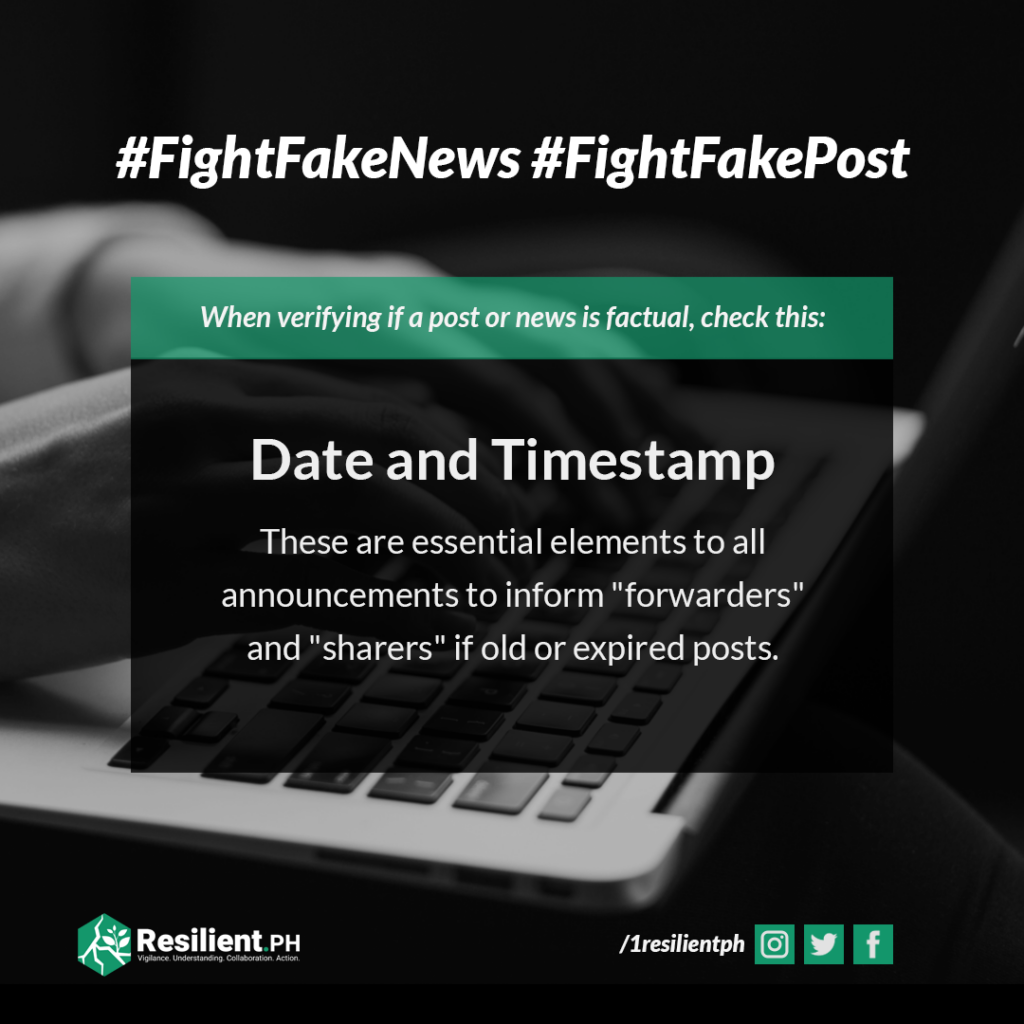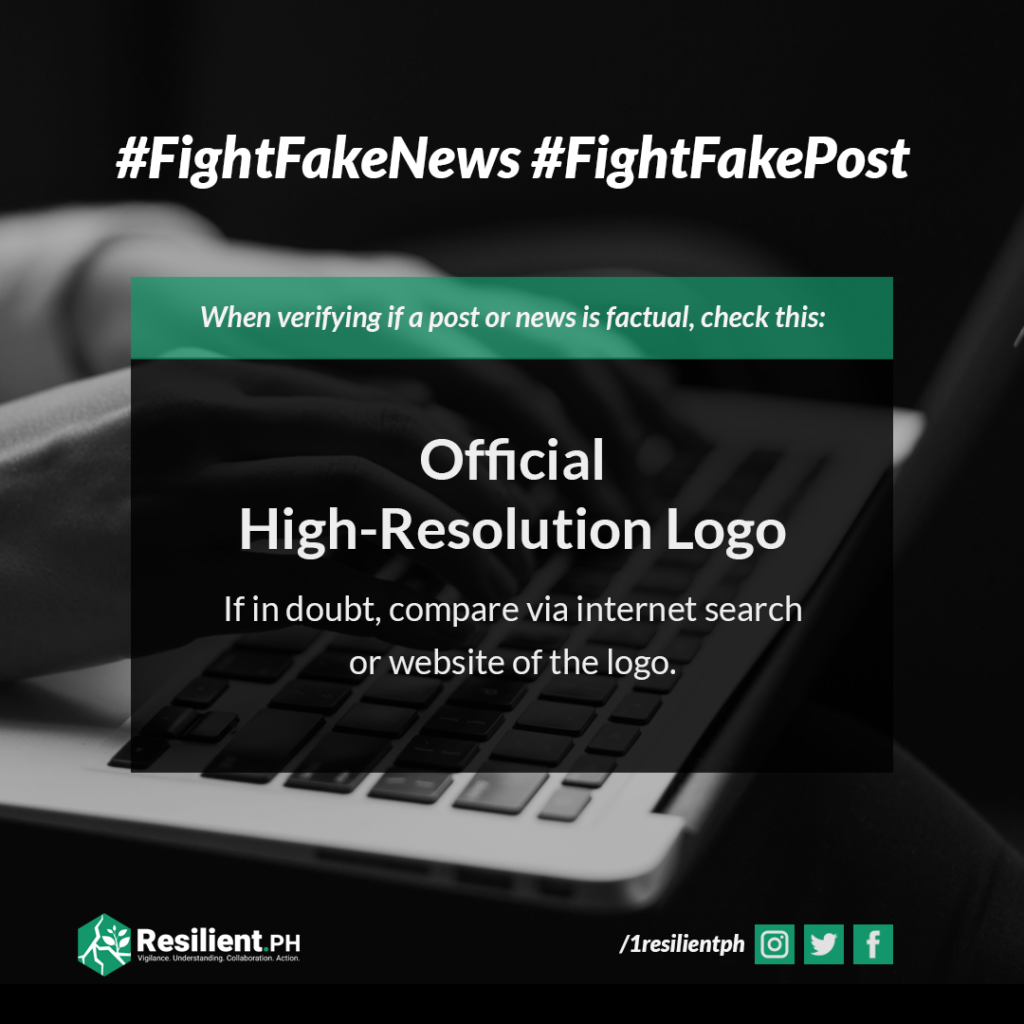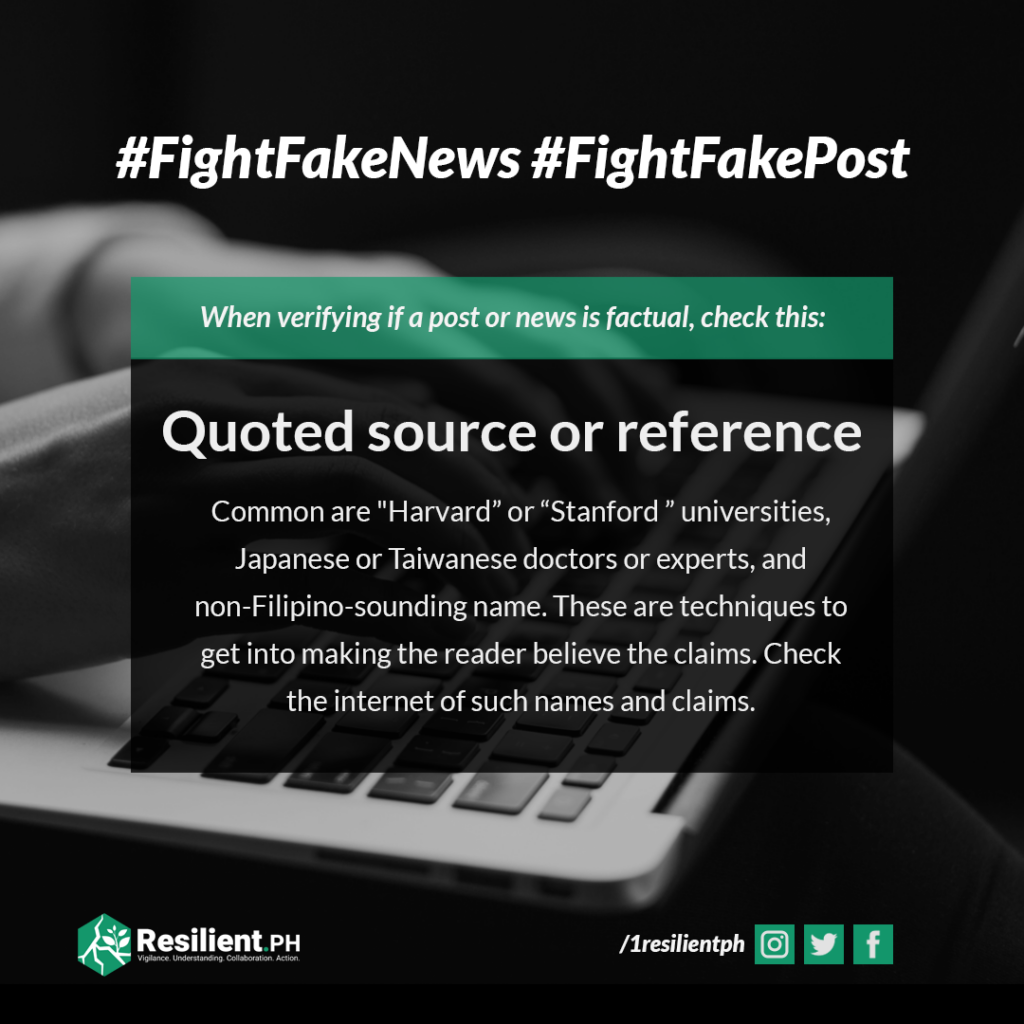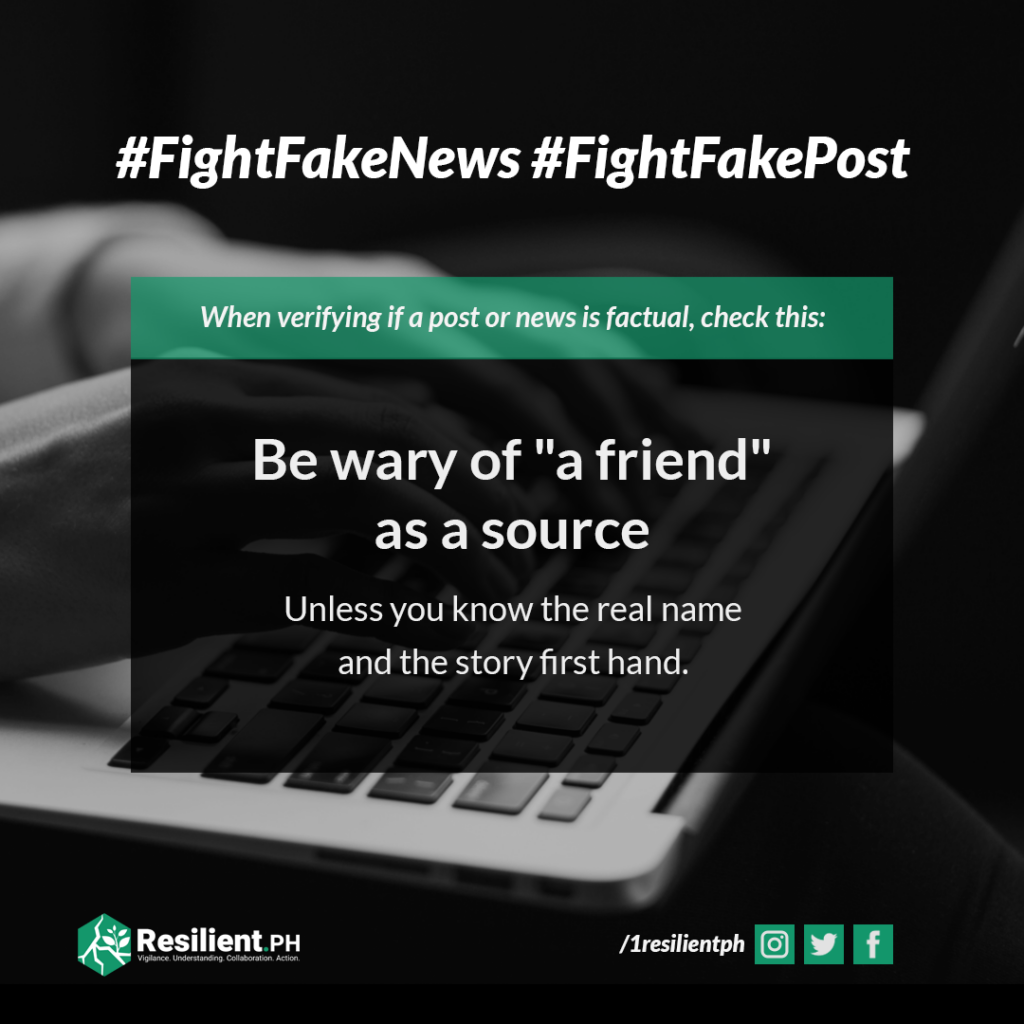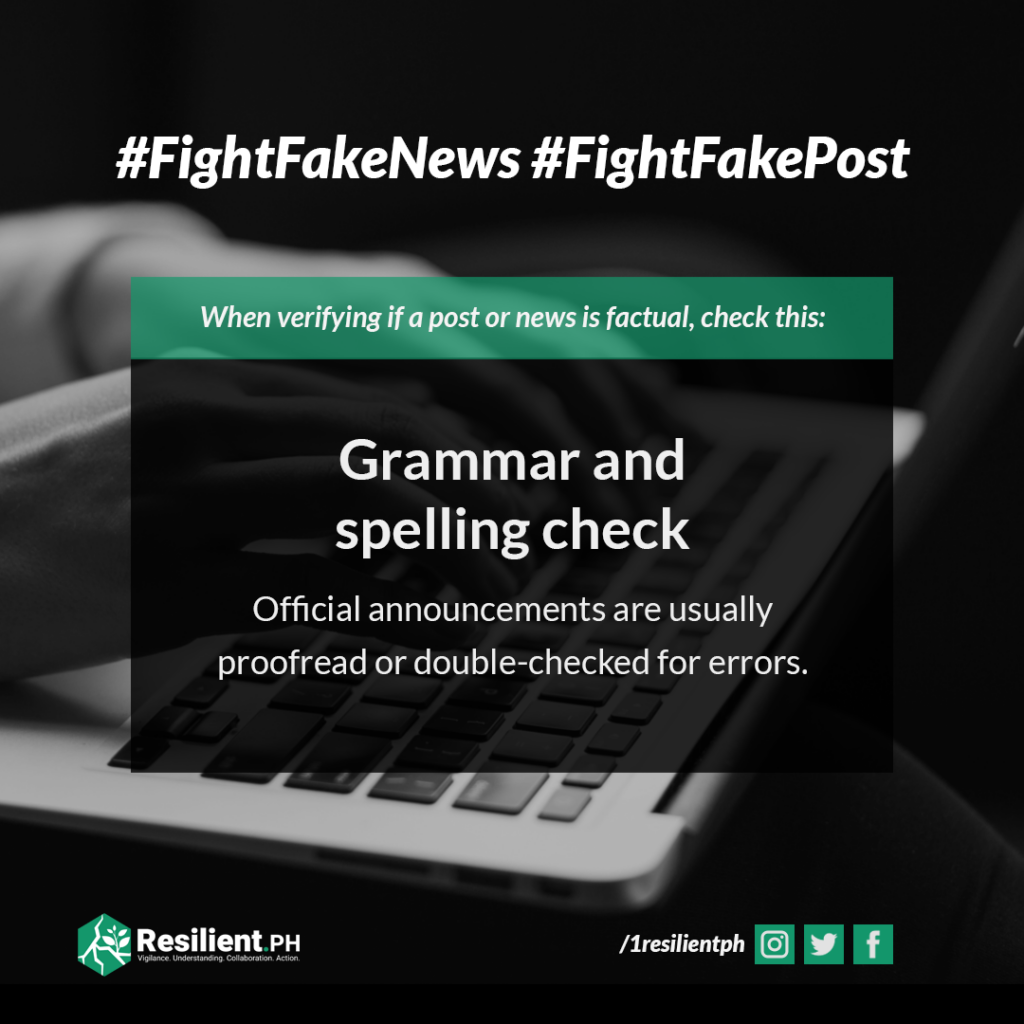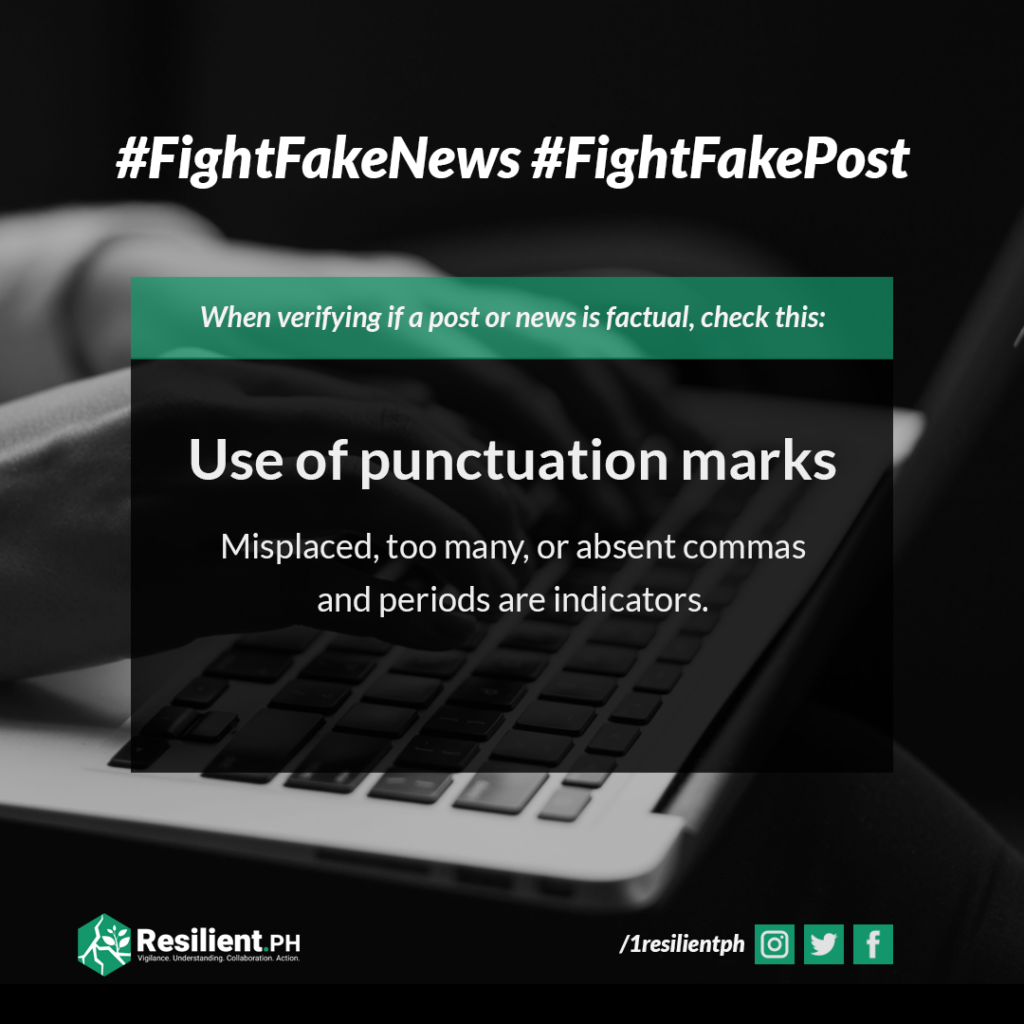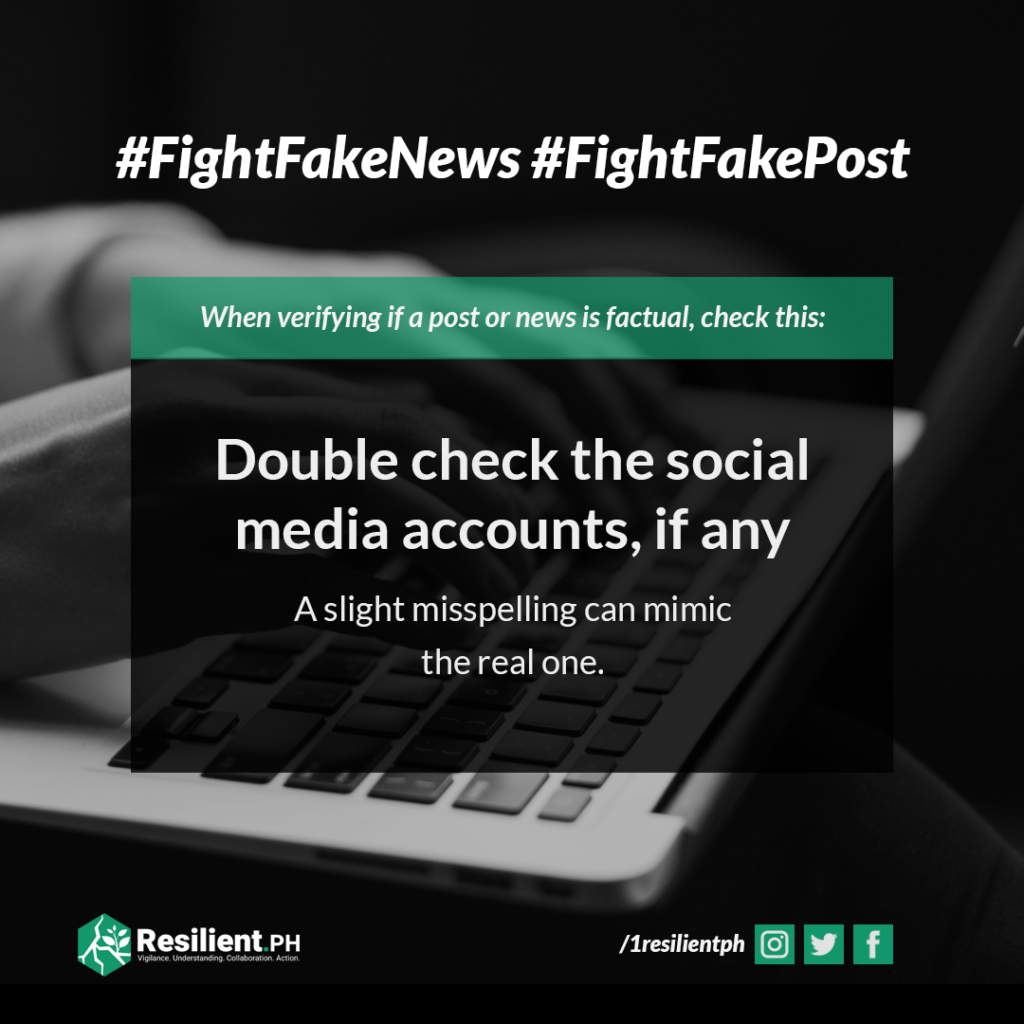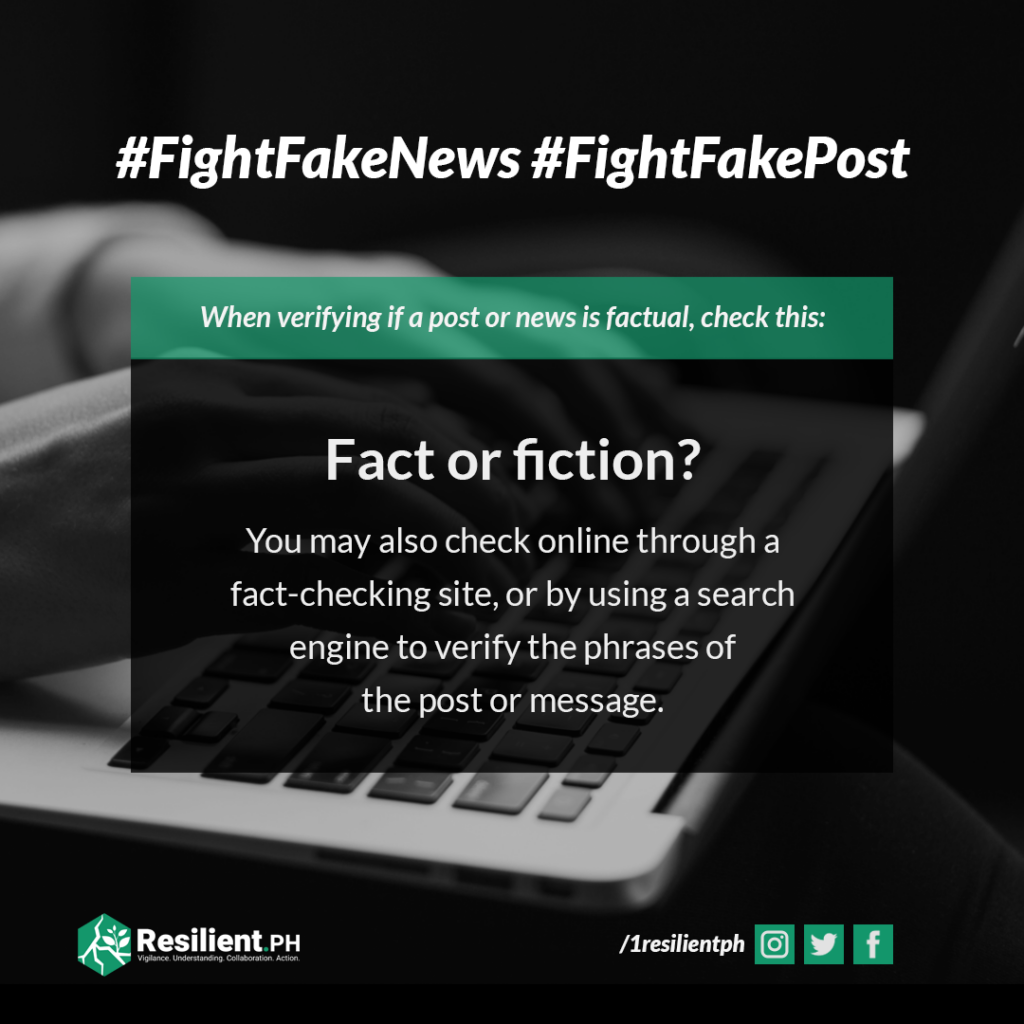You can’t be too careful when it comes to reading news online or on social media. It’s worth taking some time to look for red flags that indicate something might be misleading.
Check out these tips on how to verify if a post or news is factual or fake.
1. Date and Timestamp
These are essential elements to all announcements to inform “forwarders” and “sharers” if old or expired posts.
2. Official High-Resolution Logo
If in doubt, compare via internet search or website of the logo.
3. Quoted source or reference
Common are “Harvard” or “Stanford” universities, Japanese or Taiwanese doctors or experts. Or with the non-Filipino sounding name. These are techniques to get into making the reader believe the claims. Check the internet of such names and claims.
4. Be wary of “a friend” as a source
Unless you know the real name and the story first hand.
5. Grammar and spelling check
Official announcements are usually proofread or double-checked for errors.
6. Use of punctuation marks
Misplaced, too many, or absent commas and periods are indicators.
7. Double check the social media accounts, if any
A slight misspelling can mimic the real one.
8. ‘Go viral’ vibes
Trying hard to go viral by overly encouraging or threatening you to share or forward.
9. Fact or fiction?
You may also check online through a fact-checking site, or by using a search engine to verify the phrases of the post or message.
